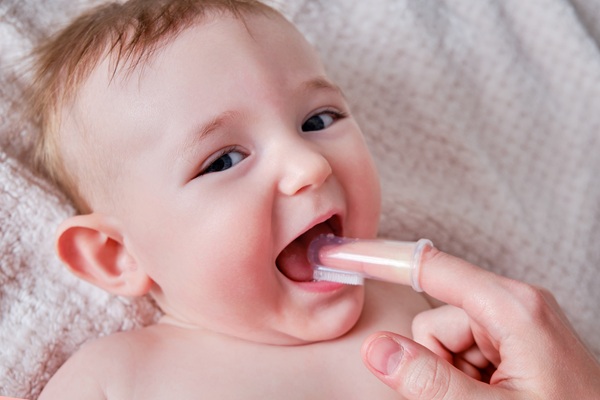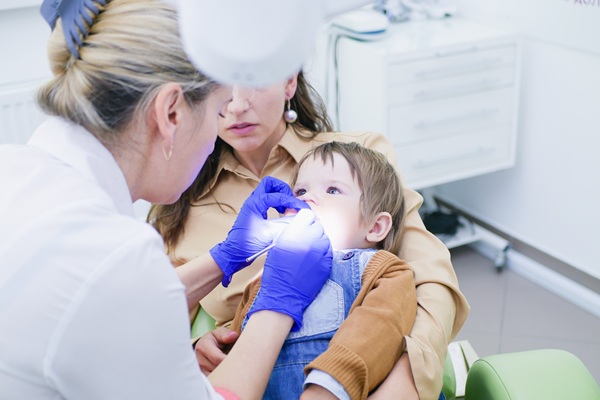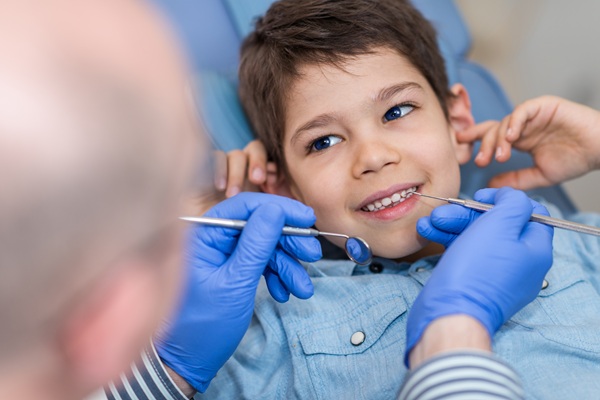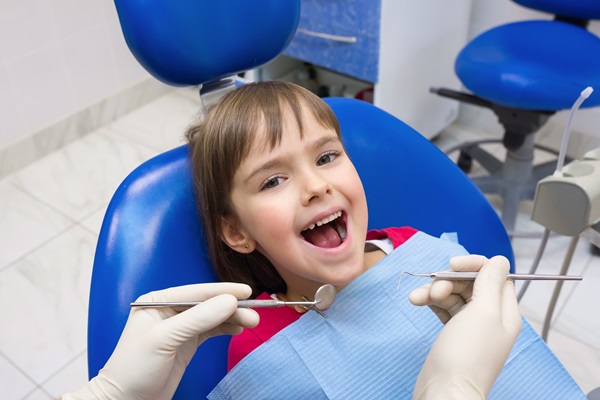Dental AwarenessHutto, TX
Pediatric Dentist
- Why Do you go to a Pediatric Dentist?
Children are not just small adults. They are not always able to be patient and cooperative during a dental exam. Pediatric dentists know how to examine and treat children in ways that make them comfortable. In addition, pediatric dentists use specially designed equipment in offices that are arranged and decorated with children in mind. A pediatric dentist offers a wide range of treatment options, as well as expertise and training to care for your child’s teeth, gums, and mouth. When your pediatrician suggests that your child receive a dental exam, you can be assured that a pediatric dentist will provide the best possible care. Having the first dental visit in a pleasant environment before the onset of any tooth problems allows the child to establish trust and confidence in dental care that can carry over into adulthood. It helps children feel good about visiting the dentist and encourages them to care for their own teeth. Pediatric Dentists are dedicated to the oral health of children from infancy through the teen years. They have the experience and qualifications to care for a child’s teeth, gums, and mouth throughout the various stages of childhood. Children begin to get their baby teeth during the first 6 months of life. Today, early childhood dental caries—an infectious disease—is 5 times more common in children than asthma, according to the CDC (Center for Disease Control and Prevention).
- What Does it mean to be a Board Certified Pediatric Dentist?
The American Board of Pediatric Dentistry (ABPD) is the certifying body for all Pediatric Dentists. It certifies pediatric dentists based on standards of excellence that lead to high quality oral health care for infants, children, adolescents, and patients with special health care needs. Certification by the ABPD provides assurance to the public that a pediatric dentist has successfully completed accredited training and a voluntary examination process designed to continually validate the knowledge, skills, and experience requisite to the delivery of quality patient care. After the Pediatric Dentist completes his/her residency, he/she must successfully complete a two part (written and oral) examination in order to be considered a Diplomat of the American Board of Pediatric Dentistry.
- What kind of training do pediatric dentists have?
Pediatric dentists have completed at least: Four years of dental school. Two additional years of residency training in dentistry for infants, children, teens, and children with special needs.
- Are not all pediatric dentists Board Certified?
No, only those that complete the examinations after residency. NOT ALL DENTISTS WHO SEE CHILDREN ARE PEDIATRIC DENTISTS, AND NOT ALL PEDIATRIC DENTISTS ARE BOARD CERTIFIED
Prevention
- Care of Your Childs Teeth
Begin daily brushing as soon as the child's first tooth erupts. For children under the age of two, a 'smear' of fluoridated tooth paste should be used. A 'pea' size amount of fluoride toothpaste can be used after the child is old enough not to swallow it. By age 4 or 5, children should brush their own teeth twice a day with supervision until about age seven to make sure they are doing a thorough job. However, each child is different. Your dentist can help you determine whether the child has the skill level to brush properly.
Proper brushing removes plaque from the inner, outer and chewing surfaces. When teaching children to brush, place toothbrush at a 45 degree angle, start along gum line with a soft bristle brush in a gentle circular motion. Brush the outer surfaces of each tooth, upper and lower. Repeat the same method on the inside surfaces and chewing surfaces of all the teeth. Finish by brushing the tongue to help fresher breath and remove bacteria.
Flossing removes plaque between the teeth where a toothbrush can't reach. Flossing should begin when any two teeth touch. You should floss the child's teeth until he or she can do it alone.
- Good diet = Healthy teeth
Healthy eating habits lead to healthy teeth. Like the rest of the body, the teeth, bones and the soft tissues of the mouth need a well-balanced diet. Children should eat a variety of foods from the five major food groups. Most snacks that children can eat lead to cavity formation. The more frequently a child snacks, the greater the chance for the tooth decay. How long food remains in the mouth also plays a role. For example, hard candy and breath mints stay in the mouth a long time, which cause longer acid attacks on the tooth enamel. If your child must snack, choose nutritious foods such as vegetables, low-fat yogurt, and low-fat cheese which are healthier and better for children's teeth.
Beware of Sports Drinks
Due to the high sugar and acids in sports drinks, they have erosive potential and the ability to dissolve even fluoride-rich enamel, which can lead to cavities.
- How Do I Prevent Cavities?
Good oral hygiene removes bactetria and the leftover food particles that combines to create cavities. For infants, use a wet gauge or clean washcloth to wipe the plaque from the teeth and gums. Avoid putting your child to bed with a bottle filled with anything other than water to prevent cavities.
For older children, brush their teeth at least twice a day. Also, watch the number of snacks containing sugar that you give your children.
The American Academy of Pediatric Dentistry recommends six month visits to the pediatric dentist beginning at your child's first birthday. Routine visits will start your child on a lifetime of good dental health.
Your pediatric dentist may also recommend protective sealants can be applied to your child's molars to prevent decay on hard to clean surfaces.
- Seal Out Decay
- Fluoride
Fluoride is an element, which has been shown to be beneficial to teeth. However, too little or too much fluoride can be detrimental to the teeth. Little or no fluoride will not strengthen the teeth to help them resist cavities. Excessive fluoride ingestion by preschool-aged children can lead to dental fluorosis, which is a chalky white or brown discoloration, or pitting of the permanent teeth. Many children often get more fluoride than their parents realize.
The benefits of fluoride are not obtained through ingestion. Fluoride's main beneficial effect is through topical application on the teeth. When acid attacks teeth it removes calcium from the teeth which weakens the tooth and eventually becomes a cavity. Fluoride, when applied topically to teeth, can replace lost calcium and actually make the tooth stronger.
Sources for topical fluoride include fluoridated water, fluoridated tooth paste, fluoride rinses and gels, and professional fluoride applications at the dentist. It is important to consult with your child's dentist to ensure that your child is getting the optimum amount of fluoride.
- Xylitol – Reducing Cavities
The American Academy of Pediatric Dentistry (AAPD) recognizes the benefits of Xylitol on the oral health of infants, children, adolescents, and persons with special health care needs.
The use of Xylitol Gum by mothers (2-3 times per day) starting 3 months after delivery and until the child is 2 years old, has proven to reduce cavities up to 70% by the time the child is 5 years old.
Studies using Xylitol as either a sugar substitute or a small dietary addition have demonstrated a dramatic reduction in new tooth decay, along with some reversal of existing dental caries. Xylitol provides additional protection that enhances all existing prevention methods. This Xylitol effect is long-lasting and possibly permanent. Low decay rates persist even years after the trials have been completed.
Studies suggest that to consistently produce positve results, Xylitol intake must be between 4-10 grams per day divided into 3-7 consumption periods. Higher quantities did not result in greater reduction of cavities and may lead to diminishing results. Similarly, consumption frequency of less than 3 times per day showed no effect.
To find gum or other products containing Xylitol, try visiting your local health food store or search the internet to find products containing 100% Xylitol.
- Mouth Guards
When a child begins to participate in recreational activities and organized sports, injuries can occur. A properly fitted mouth guard, or mouth protector, is an important piece of athletic gear that can help protect your child's smile, and should be used during any activity that could result in a blow to the face or mouth.
Mouth guards help prevent broken teeth, and injuries to the lips, tongue, face or jaw. A properly fitted mouth guard will stay in place while your child is wearing it, making it easy for them to talk and breathe.
Ask your pediatric dentist about custom and store-bought mouth protectors.
- Adolescent Dentistry
Tongue Piercing - Is It Really Cool?
You might not be surprised anymore to see people with pierced tongues, lips or cheeks, but you might be surprised to know just how dangerous these piercings can be.
There are many risks involved with oral piercings, including chipped or cracked teeth, blood clots, blood poisoning, heart infections, brain abscess, nerve disorders (trigeminal neuralgia), receding gums or scar tissue. Your mouth contains millions of bacteria, and infection is a common complication of oral piercing. Your tongue could swell large enough to close off your airway!
Common symptoms after piercing include pain, swelling, infection, an increased flow of saliva and injuries to gum tissue. Difficult-to-control bleeding or nerve damage can result if a blood vessel or nerve bundle is in the path of the needle.
So follow the advice of the American Dental Association and give your mouth a break - skip the mouth jewelry.
Tobacco - Bad News In Any Form
Tobacco in any form can jeopardize your child's health and cause incurable damage. Teach your child about the dangers of tobacco.
Smokeless tobacco, also called spit, chew or snuff, is often used by teens who believe that it is a safe alternative to smoking cigarettes. This is an unfortunate misconception. Studies show that spit tobacco may be more addictive than smoking cigarettes and may be more difficult to quit. Teens who use it may be interested to know that one can of snuff per day delivers as much nicotine as 60 cigarettes. In as little as three to four months, smokeless tobacco use can cause periodontal disease and produce pre-cancerous lesions called leukoplakias
If your child is a tobacco user you should watch for the following that could be early signs of oral cancer:
- A sore that won’t heal.
- White or red leathery patches on the lips, and on or under the tongue.
- Pain, tenderness or numbness anywhere in the mouth or lips.
- Difficulty chewing, swallowing, speaking or moving the jaw or tongue; or a change in the way the teeth fit together.
- Because the early signs of oral cancer usually are not painful, people often ignore them. If it’s not caught in the early stages, oral cancer can require extensive, sometimes disfiguring, surgery. Even worse, it can kill.
Help your child avoid tobacco in any form. By doing so, they will avoid bringing cancer-causing chemicals in direct contact with their tongue, gums and cheek.
A sealant is a clear or shaded plastic material that is applied to the chewing surfaces (grooves) of the back teeth (premolars and molars), where four out of five cavities in children are found. This sealant acts as a barrier to food, plaque, and acid, thus protecting the decay-prone areas of the teeth.
FAQ’s
Who is a Pediatric Dentist?
Pediatric dentists are the pediatricians of dentistry. A pediatric dentist has two to three years specialty training following dental school and limits her/his practice to treating children only. Pediatric dentists are primary and specialty oral care providers for infants and children through adolescence, including those with special health needs.
Why are primary teeth so important?
It is very important to maintain the health of the primary teeth. Neglected cavities can and frequently do lead to problems which affect developing permanent teeth. Primary teeth, or baby teeth, are important for
- Proper chewing and eating,
- Providing space for the permanent teeth and guiding them into the correct position, and
- Permitting normal development of the jaw bones and muscles
- Primary teeth affect the development of speech. This is especially important in the early stages of 18 months to 2 years of age when speech is developing.
The front 4 teeth last until 6-7 years of age, the back teeth (cuspids and molars) aren't replaced unit age 10-13.
Eruption of your Child's Teeth
Children's teeth begin forming before birth. As early as 4 months, the primary (or baby) teeth to erupt through the gums are the lower central incisors, followed closely by the upper central incisors
Although all 20 primary teeth usually appear by age 3, the pace and order of their eruption varies.
Permanent teeth begin appearing around age 6, starting with the first molars and lower central incisors. This process continues until approximately age 21. Adults have 28 permanent teeth, or up to 32 including the third molars ( or wisdom teeth).
Dental Emergencies
Toothache: Clean the area of the affected tooth. Rinse the mouth thoroughly with warm water or use dental floss to dislodge any food that may be impacted. If the pain still exists, contact your child's dentist.
Cut of Bitten Tongue, Lip or Cheek: Apply ice to injured areas to help control swelling. If there is bleeding, apply firm but gentl pressure with a gauze or cloth. If bleeding cannot be controlled by simple pressure, call a doctor or visit the hospital emergency room.
Knocked Out or Displaced Permanent Tooth: If possible, find the tooth. Handle it by the crown, not by the root. You may rinse the tooth with water only. DO NOT clean with soap, scrub or handle the tooth unnecessarily. Inspect the tooth for fractures. If it is sound, try to reinsert in the socket. Have the patient hold the tooth in place by biting on a gauze. If you cannot reinsert the tooth, transport the tooth in a cup containing the patient's saliva or milk. If the patient is old enough, the tooth may also be carried in the patient's mouth (beside the cheek). The patient must see a dentist IMMEDIATELY. Time is a critical factor in saving the tooth.
Digital X-Rays
Dental x-rays, known as radiographs, are essential diagnostic tools for the prevention of serious dental diseases and complications. They provide the dentist with valuable information not available through a regular dental exam. Identifying such problems early saves you time, money, and unnecessary pain. Dental x- rays can reveal:
- Tooth abscesses or cysts
- Bone loss
- Tumors, both cancerous and non-cancerous
- Decay between teeth
- Developmental abnormalities
- Poor tooth and root positions
- Problems inside a tooth and below the gum line
Patients often ask if dental x-rays are safe. While x-rays do use low-level radiation to capture images, the amount of radiation exposure a patient receives from a full mouth series of dental x-rays is equal to what a person normally receives in a single day from natural sources present in our everyday lives. With precautions in place, x-rays are perfectly safe. Dental x-rays are not taken on every check-up visit. The dentist regularly reviews each patient’s unique situation and requests the x-rays only when necessary based on medical and dental history, regular screenings, age considerations, and risk for disease. Bite-wing x-rays (x-rays of top and bottom teeth biting together) are generally recommended once or twice a year.
What is the best tooth paste for my child?
Tooth brushing is one of the most important task for good oral health. Many toothpastes, and/or tooth polishes, however, can damage young smiles. They contain harsh abrasives which can wear away young tooth enamel. When looking for a toothpaste for your child make sure to pick one that is recommended by the American Dental Association. These toothpastes have undergone testing to ensure they are safe to use.
It is important to select a toothpaste that contains fluoride, as fluoride helps to prevent dental decay. Remember, children should spit out toothpaste after brushing to avoid getting too much fluoride. If too much fluoride is ingested, a condition know as fluorosis, which affects the permanent teeth, can occur. If your child is too young or unable to spit out toothpaste, use only a smear of toothpaste so that if it is swallowed the amount of fluoride ingested will be minimal.
Thumb Sucking
Sucking is a natural reflex and infants and young children may use thumbs, fingers, pacifiers and other objects on which to suck. It may make them feel secure and happy or provide a sense of security at difficult periods. Since thumb sucking is relaxing, it may induce sleep.
Thumb sucking that persists too long can cause problems with the proper growth of the mouth and tooth alignment. How intensely a child sucks on fingers or thumbs will determine whether or not dental problems may result. Children who rest their thumbs passively in their mouths are less likely to have difficulty than those who vigorously suck their thumbs.
Pacifiers are no substitute for thumb sucking. They can affect the teeth essentially the same way as sucking fingers and thumbs. However, use of the pacifier can be controlled and modified more easily than the thumb or finger habit. If you have concerns about thumb sucking or use of a pacifier, or if this habit persists beyond age three, consult our office.
Contact Us
Champion Smiles Pediatric Dentistry is located at
125 Ed
Schmidt Blvd Ste 240
Hutto, TX
78634
Call our office today at (512) 846-8046 to schedule your child's dental appointment. Same day dental appointments available.





